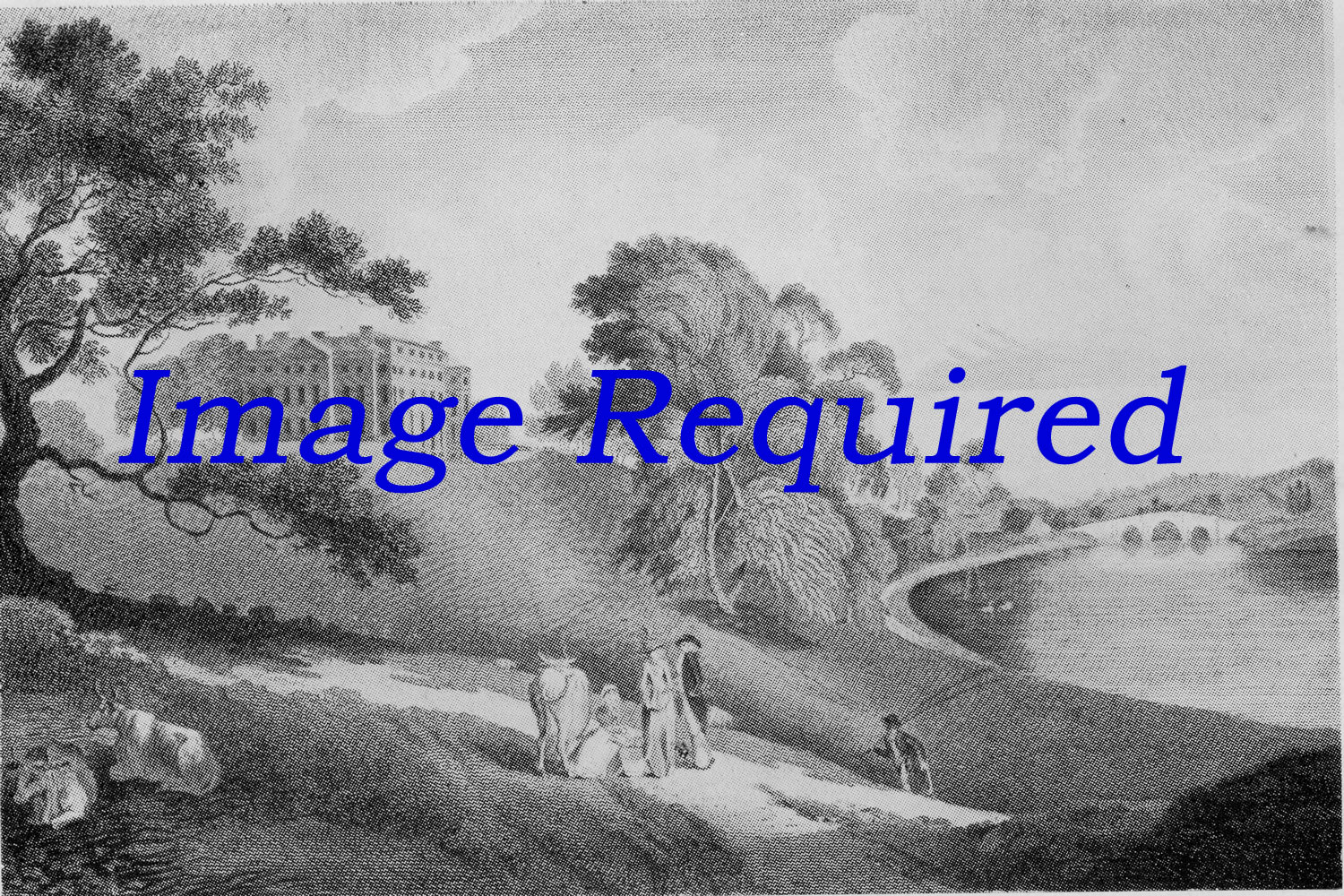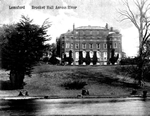Edward Brocket married Elizabeth Thawtes (1445 – 1507) Son John Brocket (1449 – 1532)


Edward Brocket and Elizabeth had several children, six of them surviving at the time Edward died. In his will Edward left 'my vi childerne eche of theim a pece of siluer'.
There are three pedigrees that trace Edward’s lineage. Harley 807, followed by Berry and Clutterbuck. They create as many problems as they solve. In his will Edward left 'my vj childerne eche of theim a pece of siluer'. Three were sons, of full age—the last 2 therefore—Robert and William—born at the latest 1466 and 1467. Harley 807, followed by Berry and Clutterbuck, recorded 7 children, but only 2 were daughters. Perhaps their 3rd surviving daughter was another Elizabeth. Two sons were called Thomas in an attempt to continue the name of Edward's father and brother, and probably grandfather. The 1st Thomas was therefore probably the 1st son. The 3 pedigrees did not place the names in the same order; some of this was clearly in order to give visual balance to the charts on the page, but the Brokett descent in BL ms Add 29438 (which only listed heirs) said 'Thomas Brokett Esqr [Edward's] son & heir dy'd without issue male' and called John the 2nd son.
Thomas. All evidence suggests that this Thomas died unmarried. The alledged marriage of Joan, daughter of Sir William Neville, Lord Fauconberg to a 'Mr. Thos. Brocket, of co. Herts' is to be rejected, compared and perhaps linked with a flawed attempt to make Dionisia more explicitly a Fauconberg heiress.
John. Edward's heir, becoming head of the dynasty in Hertfordshire after Edward died in 1488.
Thomas. Recorded as marrying Elizabeth CALTHROP or Calthorpe, heiress, Thomas appears to have stayed in Yorkshire. Calthrop is not a Hertfordshire name—there are no old Hertfordshire wills of that name—whereas one of the coats of arms in the windows of 16th C Steeton Hall were of Calthorpe (another was of Thwaites, MJ Harrison 2000 p 263). They had a daughter Margaret, but who apparently had no issue.
Elizabeth. According to Harley 807 Elizabeth married DOCRAY, but according to the Hertfordshire Berry and Clutterbuck she married Thomas FISHER of Hertfordshire.The Visitation of Hertfordshire 1572 and 1634 for 'Docwra of Putteridge' (Metcalfe 1886 Appendix II 139) recorded Roger, 2nd son of Peter Docwra of Yorkshire, marrying Elizabeth 'daughter to Edward Brocket of Brocket Hall, co. York'. The 1860 Gateshead Pedigree followed Metcalfe. But the chronology is problematic. According to Metcalfe, between Roger and John (d 1531) there were 3 generations: Roger, Reignold, Richard, James, John. Even assuming as little as 21 year generation gaps, this would place Roger's birth in the early 1400s, while Elizabeth could not have been born before 1451. Two solutions could be:
1. The Elizabeth who married Roger Docwra was the daughter of an earlier Brocket of Brocket Hall. There was only one—Edward's father Thomas (c 1370-1435), but if he had a daughter Elizabeth, she probably married a Hesylrigg. Thomas, however was probably himself not born much before Roger, so perhaps Elizabeth was a Yorkshire relative of the line that established Brocket Hall, and Metcalfe's 'of Brocket Hall' was a heraldic improvement.2. To follow Harley 807 which simply said, 'Elizabeth married unto Docray' and conclude that Elizabeth married another Docwra after 1450. Elizabeth—a second one?—who married HAZELRIGG. Harley 807 placed her as Edward's sister.
Robert. While his brothers were bequeathed land in Hertfordshire, Robert was bequeathed the manor of Jewleas, near Appleton. Harley 807 dubbed him 'sine prole' (without issue), but his son and descendants were local lords of the main Broket manor there until 1565. Harley 807's frequent sine prole is genealogically unreliable and reflects inheritance concerns of 3 generations later. Children other than the heir are listed in each generation, for sure, but rather to dismiss any potential claim. Glover usually wrote that they died sine prole—without children—or sans issu; giving them no descendants emphasized the eldest line.
William. Bequeathed the Manor of Herons in Wheathampstead. Although dubbed 'sine prole' by Glover like his brother Robert, William was probably the father of William Brockett, yeoman of Hitchin, died 1556. Alice married to Thomas PERIENT Esq.
Children of Edward Brocket and wife Elizabeth Thwaytes: [as best as can be determined by the three pedigrees discussed above]
Thomas Brocket, born c.1451 and died quite young, probably before 1453, as the next son was given the same name.
Thomas Brocket, born c.1453, often called “the Younger” to distinguish him from his dead brother. Recorded as marrying Elizabeth Calthrop or Calthorpe, heiress, Thomas appears to have stayed in Yorkshire. Calthrop is not a Hertfordshire name—there are no old Hertfordshire wills of that name—whereas one of the coats of arms in the windows of 16th C Steeton Hall were of Calthorpe (another was of Thwaites, MJ Harrison 2000 p 263). They had a daughter Margaret, but who apparently had no issue.
Elizabeth Brocket, born c.1455. She married Thomas Fisher of Hertfordshire.
Alice Brocket, born c.1459, married Thomas Pervent or Perient
John Brocket, Esq., Sheriff of Hertfordshire, became the heir to the manors. He married Lucy Pulter by whom they had children, John, Edward Lucy, Elizabeth and Allice. Their son Edward married Margaret Mikleford. This Edward resided at Letchworth, Hertfordshire. The descendants of this Brocket line are the Brocketts of Codicot, Hertfordshire and the ‘Rector’ of Graveley parish who during the Civil War, 1642-51, was one of large number of the clergy ejected from their livings.
Robert Brocket, born c.1466
William Brocket, the youngest son, born c.1467, probably the founder of the “cadet line,” the Brocket’s of Campton and Dunton, Bedfordshire and Guilden Morden, Cambridgeshire.
Elizabeth Thawtes (1445 – 1507)
B: 1445 suggests Yorkshire
d. 1515 Brocket Hall, Hertfordshire, , England
Elizabeth was of 'Loftes in Yorksh', presumably the Lofthouse near WakefieldImage from LLHG
Extra information from www.geni.com
Contact Us Today info@lemsfordhistory.co.uk. Images and articles welcomed
New Brocket Hall
The estate was sold to Sir Matthew Lamb in 1746 by Thomas Wiinnington . This era was an eventful time Sir Matthew engaged one of the leading architects of the day Sir James Paine and asked him to build a new Brocket hall and Paine did just that. Sir Matthew died around 1765.
James Paine (1717–1789) was an English architect.Essentially a Palladian, early in his career he was Clerk of Works at Nostell Priory, and worked on many other projects in the area including Heath House in the village of Heath in between Nostell Priory and Wakefield.From the 1750s, he had his own practice, and designed many villas, usually consisting of a central building, often with a fine staircase, and two symmetrical wings.
Wikipedia
Early Days
LAround this area had several manors,Symonshyde, Benstead, Heron, and Chewells around the time of Henry III (1207 to 1272 ) these mannors merge and become ‘Watershyppes’Early evidence suggests the house dates back to 1239 and was owned by Simon Fitz Ade. They were also known as FitzSymon.


The Families of Brocket Hall
Early evidence suggests the house dates back to 1239 and was owned by Simon Fitz Ade. They were also known as FitzSymon.
Thomas Lord Fauconberg born 1341 and married to Joan Nevile born 1363 – daughter Joan De Fauconberg Born 1367 :
The most famous of the Brocket family was Sir John Brocket, who married Helen, daughter of Sir Rowland Lytton of Knebworth in 1558 . Sir John Brocket and was high sheriff of Hertfordshire in 1553. Sir John was a close ally of Elizabeth 1st,. Elizabeth was under house arrest at nearby Hatfield house.
The estate was sold to Sir Matthew Lamb in 1746 by Thomas Wiinnington . This era was an eventful time Sir Matthew engaged one of the leading architects of the day Sir James Paine and asked him to build a new Brocket hall and Paine did just that. Sir Matthew died around 1765.
Stephens retired to England. He was created a Baronet, of Montreal in the Province of Quebec in the Dominion of Canada, in 1886, and raised to the peerage as Baron Mount Stephen, of Mount Stephen in the Province of British Columbia and Dominion of Canada
On the death of Lord Mount Stephen in 1921 the house was put up for sale and bought in 1923 by Sir Charles Nall –Cain of the Node Codicote. Sir Charles took the title ‘Lord Brocket ‘ in 1933 and on his death in the following year the estate passed onto his only son Arthur Ronald Nall- Cain (1904 – 1966) Lord Brocket.